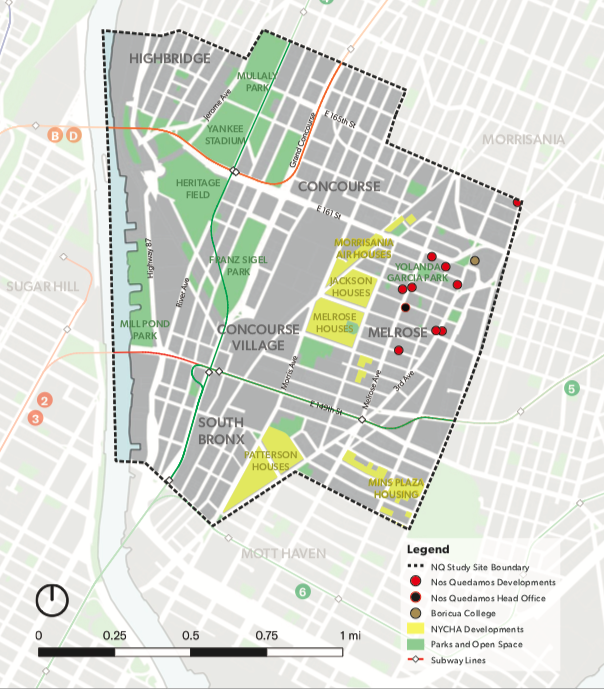A new blueprint for community development in the South Bronx posits that local residents are best equipped to mastermind the kind of changes their neighborhoods need to prosper.
Melrose-based Nos Quedamos released the South Bronx Land and Community Resource Trust (SBxLCRT) Study, which calls for collective ownership of local parcels that would be converted into affordable housing, and centralized “resiliency hubs” to provide essential services in the event of natural disasters and other emergencies.
The area the study takes in, defined in studies dating back to the 1990s as Melrose Commons, extends from the Harlem River on its western flank, north to 165th Street in Morrisania, St Ann’s Avenue to the east, and south 139th Street in Mott Haven.
In the new report, the group suggests three main initiatives:
- Community solar. Solar panels would be installed on public buildings and in vacant lots to provide local homes with low-cost, sustainable energy.
-
Affordable housing. Under a community land trust, the study says, rents would permanently drop to affordable levels for low-income tenants, and land speculation would be removed as a constant threat.
- Low-cost broadband. A hub would be placed on the roof of one tall building, transmitting internet service to smaller surrounding buildings. Users would pay a one-time fee for equipment without having to subscribe for monthly internet service.
The plan is the result of Nos Quedamos’ partnership with Gov. Andrew Cuomo on a Downtown Revitalization Initiative to boost economic opportunities and quality of life in the South Bronx. It harks back to Nos Quedamos’ Melrose Commons Urban Renewal Plan, which the city approved in 1994 after years of advocacy by grassroots groups. Leading up to that plan, Melrose residents united and worked with a design team to strategize a rebuild of the neighborhood, which had been gutted by years of arsons, and neglect by city government.
Nos Quedamos teamed with Hester Street, a Manhattan urban planning nonprofit that provided technical assistance and NYC Mayor’s Office of Environmental Remediation on the year-long study.

